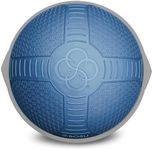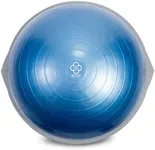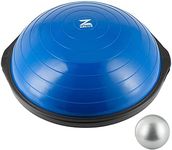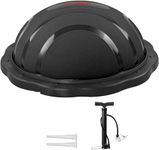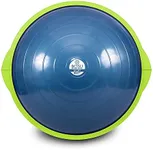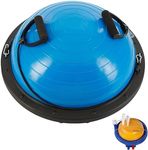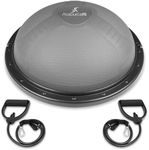Buying Guide for the Best Bosu Balls
Choosing the right BOSU ball can make a big difference in your workouts, whether you’re focusing on balance, strength, or flexibility. BOSU balls are versatile pieces of fitness equipment that can be used for a wide range of exercises, from core training to cardio. When picking a BOSU ball, it’s important to consider a few key features to ensure it matches your fitness goals, space, and comfort needs. Understanding these features will help you make a confident choice and get the most out of your purchase.DiameterThe diameter of a BOSU ball refers to how wide it is from one side to the other. This is important because it affects the stability and the types of exercises you can do. Smaller diameters (around 20 inches or less) are more portable and can be easier to store, but they may feel less stable, especially for taller users or those with a wider stance. Larger diameters (around 25-26 inches) provide more surface area, which can be more comfortable and stable for a wider range of exercises. If you plan to use the BOSU ball for standing exercises or if you are taller, a larger diameter is usually a better fit. For travel or limited space, a smaller diameter might be more convenient.
Weight CapacityWeight capacity tells you the maximum amount of weight the BOSU ball can safely support. This is crucial for safety and durability. Most BOSU balls can handle between 250 to 350 pounds, but some heavy-duty versions can support even more. If you are close to the upper limit of a ball’s weight capacity, or if you plan to use it with added weights (like dumbbells), choose a model with a higher weight rating. For general fitness and most users, a standard weight capacity is sufficient, but always check to ensure it matches your needs.
Surface TextureThe surface texture of a BOSU ball affects grip and comfort during use. Some BOSU balls have a smooth surface, while others have ridges or a textured finish. A textured surface can help prevent slipping, especially if you sweat during workouts or plan to use the ball barefoot. If you want extra grip for high-intensity or balance exercises, look for a model with a more pronounced texture. For gentle stretching or yoga, a smoother surface may feel more comfortable.
Base Material and StabilityThe base of a BOSU ball is the flat, hard side that sits on the floor. The material and design of the base affect how stable the ball is during use. Some bases are made of heavy-duty plastic, while others may have rubberized or non-slip features. A sturdier, non-slip base is important if you plan to do dynamic exercises or use the BOSU ball on smooth floors. If you want to use the BOSU ball for more intense workouts or in a shared space, prioritize a model with a stable, durable base.
Inflation and AdjustabilityBOSU balls are inflated to provide the right amount of bounce and instability. Some models allow you to adjust the firmness by adding or releasing air. A firmer ball offers more stability and is better for beginners or for exercises that require a solid surface. A softer, less inflated ball increases instability, which can make exercises more challenging and engage your core muscles more. If you want to vary your workouts or share the BOSU ball with others, look for a model that allows easy inflation adjustments.

